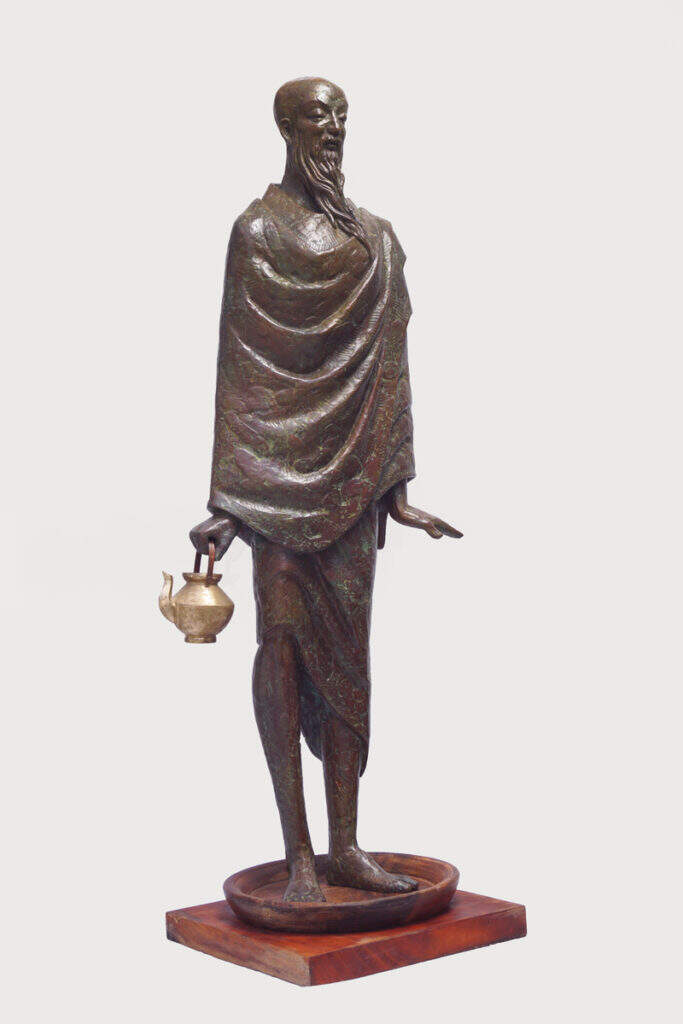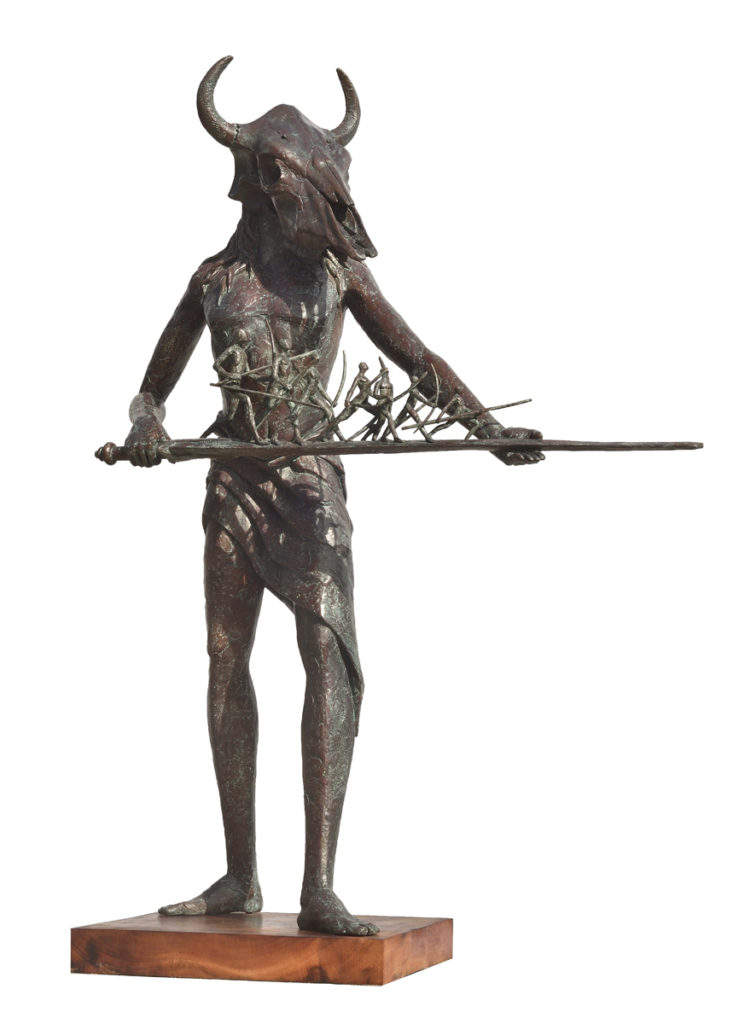
Akhil Chandra Das’s stellar bronzes at Jehangir Art Gallery 28-09-2022
Imagine a tall lissome Durga who has been created as an archetypal deity with her Trishul, standing with her 10 arms widespread yoked into an elliptical two pronged sword like weapon that forms an arc of cosmic delight. The Mahishasura under her head is stamped for life.
On 4th October 2022 at Jehangir Art Gallery Mumbai , Akhil Chandra Das’s Sculpture show by Aakriti Art Gallery Kolkata, will have a bevvy of beauties from the human figure to goats and horses that bring back tales of yore.
Human figures
Akhil Chandra has a deep understanding of the human form.Amongst the 14 human figures Monk is an austere toned standing figure with the water vessel , representing an evocative epoch of understanding the beauty of refined forms and the power of translating the human figure into a classicising naturalism, beautifully exemplified in the present works.

Akhil Chandra handles bronze as if it is his childhood ally; he turns to the traditional sculptural material such as bronze, to produce more restrained and elegant human figures. The Durga is a treat for tired eyes. This Durga is a contemporary goddess. She stands tall and is a creator of her own commentary and the corollaries of the modern day millennium. The full genesis of this new style reflects the history of the evolution of Akhil Chandra’s own style, and looking at all the human figure images we can at least guess what has been stirring in the artist’s mind.

The Headless human and the choreography of Towards Sainthood both create a conversation about the deeper understanding of the traditional academic system of proportions, a free research into the formal sculpture of the past, and a selection from various periods of antiquity that have at last given Akhil Chandra the feeling that a synthesis must flow from pretentious pastiche to the puissant flow of expression, emotion and evocation. Satire and mockery both flow into each other’s veins. In a way when we look at this pair we realise that modern taste is in love with the formal, and, in a sense, with the austere. But in its language of diatribes and dialogues and debates it demands also a certain grace and a distinct understanding of human fanatical behaviour as well as the power of truth and integrity in the whole epoch of living in the scheme of life’s many leanings.

Thus the human figures of Akhil Chandra, are reminiscent actually of both the past, and the present. In the many references and stories that we witness as viewers we can sense that Akhil is a voracious reader and a thinker and he contemplates his works, derived from his understanding and analysis of the simple outlines of Greek, Egyptian , Byzantine and Modern sculpture. If art is to be creative it must create—and often, as with some of Akhil Chandra’s human figures ,we realise the humans are characters from the plays of nature’s reality.

Goats and horses
Akhil Chandra’s animals are creatures of hybrid haunts they bring back tales of antiquity and speak to us about both love and cruelty to animals.His goats have humongous heads or small ones, his horses have a truncated base and they extend upward or in angular vein into a sweeping and voluptuous form. The precarious angle of the heads or bodies perfectly balance with the sway of their hips; the geometric gravitas or outlines of the upper bodies echo in the stance of their rotating portent portions.

Sometimes pared down but emphasizing an increasingly realist vernacular of abutting planes, quotidian forms, and bronze patina, he embraces the beauty of both negative and positive space as an active element of sculptural articulation, Akhil Chandra draws on a unique equivalent between the dialectics of plane and perspective in three-dimensional tenors and the play of presence and absence implied by the dulcet and blooming linearity of his shapes.

In all the sculptures at this historic solo we evince the transformation of shape into the language of naturality. The radical fusion of form and expression into one dynamic plane adds thrust to the static sculptures, suggesting movement in three-dimensions.

Incorporated into 14 human figures and 11 animals are a suite of significant sculptural innovations that earn Akhil Chandra Das a position among handful of practitioners of modern sculpture in India today.
Courtesy: The Times of India
Live Link